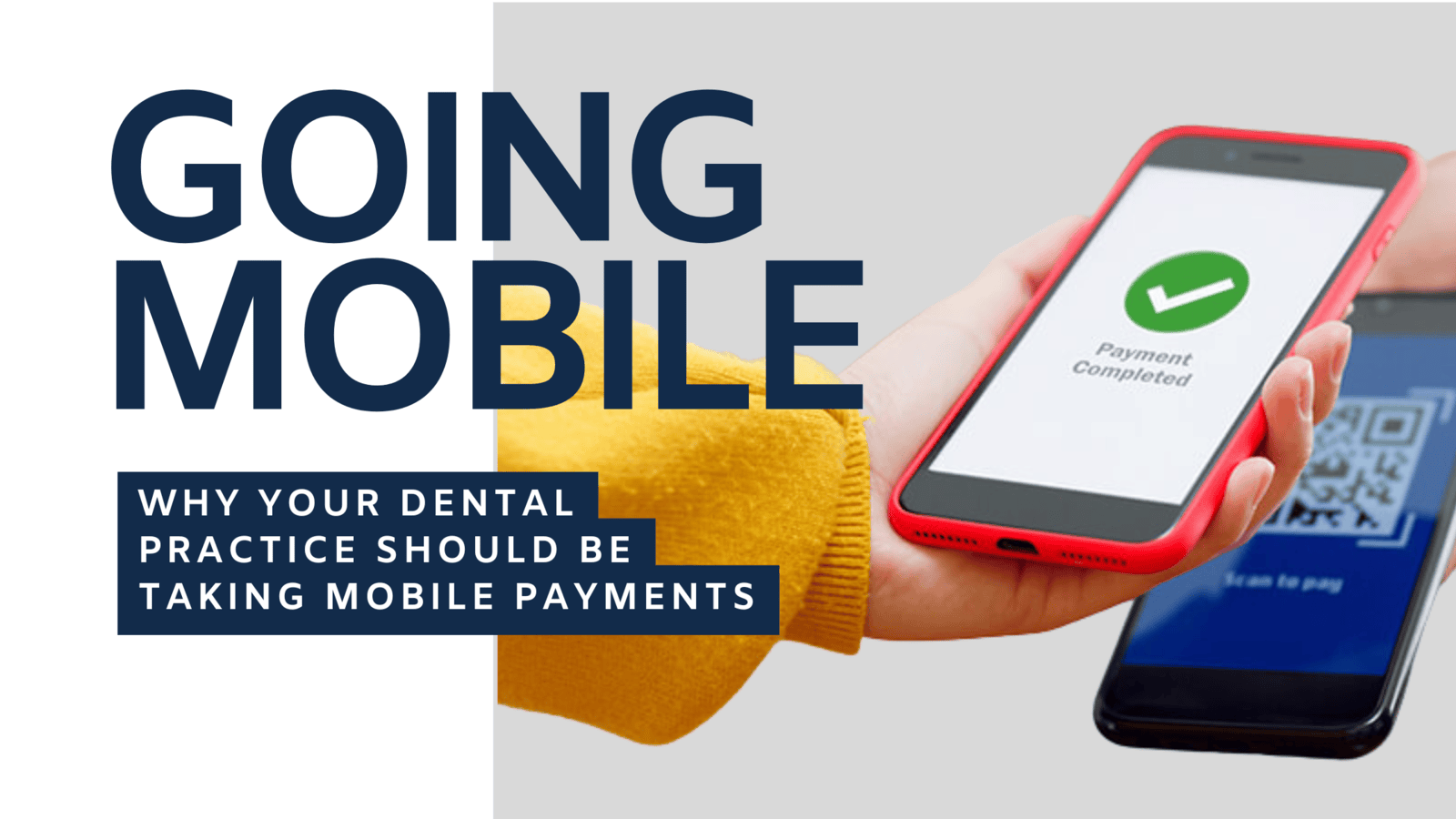
Mobile Payments for Dental Practices: Types and Benefits
For dental practices, providing patients with flexible and seamless payment options is essential to enhancing the overall experience. Mobile payments have emerged as a leading solution, offering a way for patients to pay quickly and securely. This blog will explore the types of mobile payment solutions available and the benefits they offer for dental practices.
Types of Mobile Payment Solutions
- Mobile Wallets (e.g., Apple Pay, Google Pay)Mobile wallets allow patients to store credit and debit card information securely on their smartphones. When making a payment, patients simply use their phone’s biometric authentication, such as Face ID or a fingerprint, to complete the transaction. These payments are typically contactless and can be made in person or through online payment portals.
- QR Code PaymentsQR code payments have gained popularity due to their simplicity. The dental office can generate a unique QR code for each patient or transaction, and patients can scan the code with their mobile device to complete the payment. It’s fast, secure, and requires no physical contact with payment terminals.
- Payment Apps (e.g., Venmo, Zelle)Payment apps allow patients to transfer funds directly from their bank accounts or app balance to the dental practice. This option is particularly appealing for patients who prefer direct payments and don’t want to use credit cards.
- In-App PaymentsSome dental practices offer a mobile app for managing appointments, viewing treatment plans, and making payments. Integrating mobile payment options within the app streamlines the process, allowing patients to handle everything in one place.
Benefits of Mobile Payments for Dental Practices
Enhanced Patient Convenience
Mobile payments allow patients to pay their bills instantly from their smartphones, eliminating the need to carry cash or physical cards. With mobile wallets and in-app payments, the checkout process is quick and hassle-free, which enhances the overall patient experience.Faster Payment Processing
With mobile payments, transactions are processed almost immediately, which means faster deposits into the practice’s accounts. This can help improve cash flow, a crucial aspect for any dental practice to manage operating expenses and invest in growth.Improved Patient Satisfaction
Offering a range of payment options makes it easier for patients to manage their financial obligations. Dental care can be expensive, and giving patients more flexible ways to pay increases satisfaction and retention rates.Enhanced Security
Mobile payments use encryption and tokenization to keep sensitive financial information safe. Payment methods like Apple Pay and Google Pay also utilize biometric verification, adding another layer of security. This reduces the risk of fraud and chargebacks for the dental practice.Reduced Contact for Safety
In a post-pandemic world, minimizing physical contact is more important than ever. Mobile payments, especially contactless options like mobile wallets and QR code scanning, ensure a hygienic payment process, protecting both staff and patients.Streamlined Billing and Recordkeeping
Mobile payment solutions often integrate with dental practice management software, making it easier to keep accurate records of transactions. This prevents dental offices from having to pay inflated processing rates and reduces the administrative burden by simplifying end-of-month reconciliation.Bigger Savings
Mobile In the move to mobile payments, many offices are forgoing hardware altogether, avoiding expensive up front purchases or long-term leases. In addition, many mobile payment providers offer platforms that have dual pricing built into the technology, allowing dental offices to offer separate card and cash prices at checkout - covering processing expenses.






